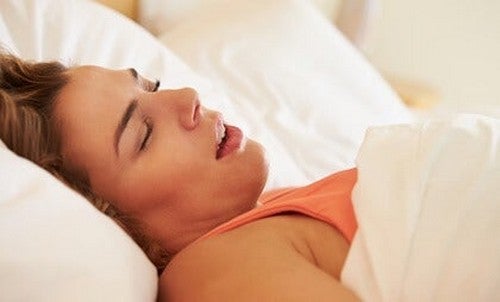Sleep apnea in women is underdiagnosed, whenever we talk about this respiratory disorder related to night rest, it is common to imagine a middle-aged or elderly man emitting conventional snoring, this image is a stereotype, because there are important differences in reality .
For starters, sleep apnea also occurs in young people and, of course, is common in both sexes, both men and women. In addition, not all patients with this disease snore; therefore, it is not easy to detect.
- However.
- Sleep disorder experts point to something important.
- We know that almost 30% of the population between the age of 25 and 70 suffers from the disease.
Diagnosis in men is also estimated to be 8 times more common than in women, but this does not mean that women suffer to a lesser extent.
So, what’s going on? What is essentially happening is that apnea manifests itself differently in women; in fact, it is common to confuse it with other diseases.
In addition, as several studies below indicate, the effects of this respiratory disorder may, in some cases, be more severe than in humans.
Sleep apnea is not an exclusive problem for men, it also occurs in women and, in some cases, is associated with an increased risk of stroke.
Obstructive sleep apnea (ED) is characterized by very specific symptoms: the person collapses while sleeping, i. e. for a few seconds, breathing is interrupted.
This is due to airway obstruction and tension of the throat muscles, which generate a clear feeling of suffocation.
At first glance, this may seem like an easy-to-diagnose disease; However, this is not always the case; at least not among women.
The characteristics of sleep apnea in women differ greatly from those of men, making it difficult to identify, so let’s see how this disturbance of sleep and breathing manifests itself in them.
However, although nocturnal breathing problems are more subtle in women, the effects tend to be more intense:
Thus, when a woman goes to the doctor, it is common for the treatment received to be oriented towards these dimensions, but not to trigger them: sleep apnea.
Many factors can influence the onset of sleep apnea in women, usually:
In recent years studies on sleep apnea in women have multiplied, a positive fact, mainly because, with this, doctors are more aware of this reality when a woman consults with problems of exhaustion, mood swings and headaches.
On the other hand, the impact that untreated apnea can have on the female sex grows by 20/2, for example, the Spanish Society of Respiratory and Thorax Surgery conducted a study in 2014 in which it demonstrated the relationship between sleep apnea and stroke in young women.
Therefore, it is essential to go to a pneumologist specialized in sleep disorders to perform a series of diagnostic tests for this pathology.
In addition, it should be noted that treatments with continuous positive pressure masks (CPAP) are very suitable; in addition to improving quality of life, they reduce the risk of stroke and cardiovascular problems.
Finally, consider this information and the importance of having restful sleep and consulting a doctor for any problems or discomfort.

